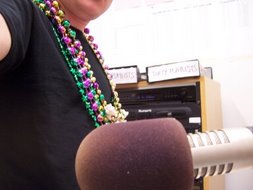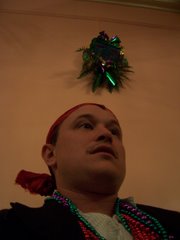
This morning, Kim and I rode our bicycles through the Quarter, up Esplanade to N. Broad, to St. Bernard Ave, to the intersection with Gentilly Blvd. We crossed to the neutral ground, dropped our bikes in the grass, and walked into "Spirit House," the great sculpture by Martin Payton and John Scott.

Loaded with symbols from the entire African diaspora--beginning with the slaves' capture in the native land through the voyage in slave ships to the survival of culture in the New World--the piece is at once graceful, haunting, and educational. Built with the help of local students, it encapsulates so much of Scott's importance as a teacher and griot, as well as his prowess as an original modern artist.

Since we returned to New Orleans, Kim and I have kept a look out for Scott's pieces throughout the city. In the building where I work, we have a large collection of his pieces, both sculpture and painting. One smaller mobile hangs above my desk, and I often stop and consider it, along with the other works in our meeting rooms and lobby.

Just this past Friday, I interviewed a lighting designer to better illuminate several of the sculptures for an upcoming event. The lighting designer asked me how Scott was doing. As it turns out, he did the lighting for "Spirit House," and was touched by the artist's humbleness and generosity in their brief conversations. This was often the case when I'd show the art to people--a sincere care and hope that John was OK.
"We actually heard he was feeling better," I told him. "We're kind of dreaming that he might even make the event."

As it turns out, John Scott passed away the next day in Houston. Though I never met him, his work's proximity to me, and the fullness of his expressions of New Orleans' identity, made the loss especially sad, and a little eerie. Standing under "Spirit House" today, though, I understood why people asked after him, and just how important an artist can be to his own people and place.












